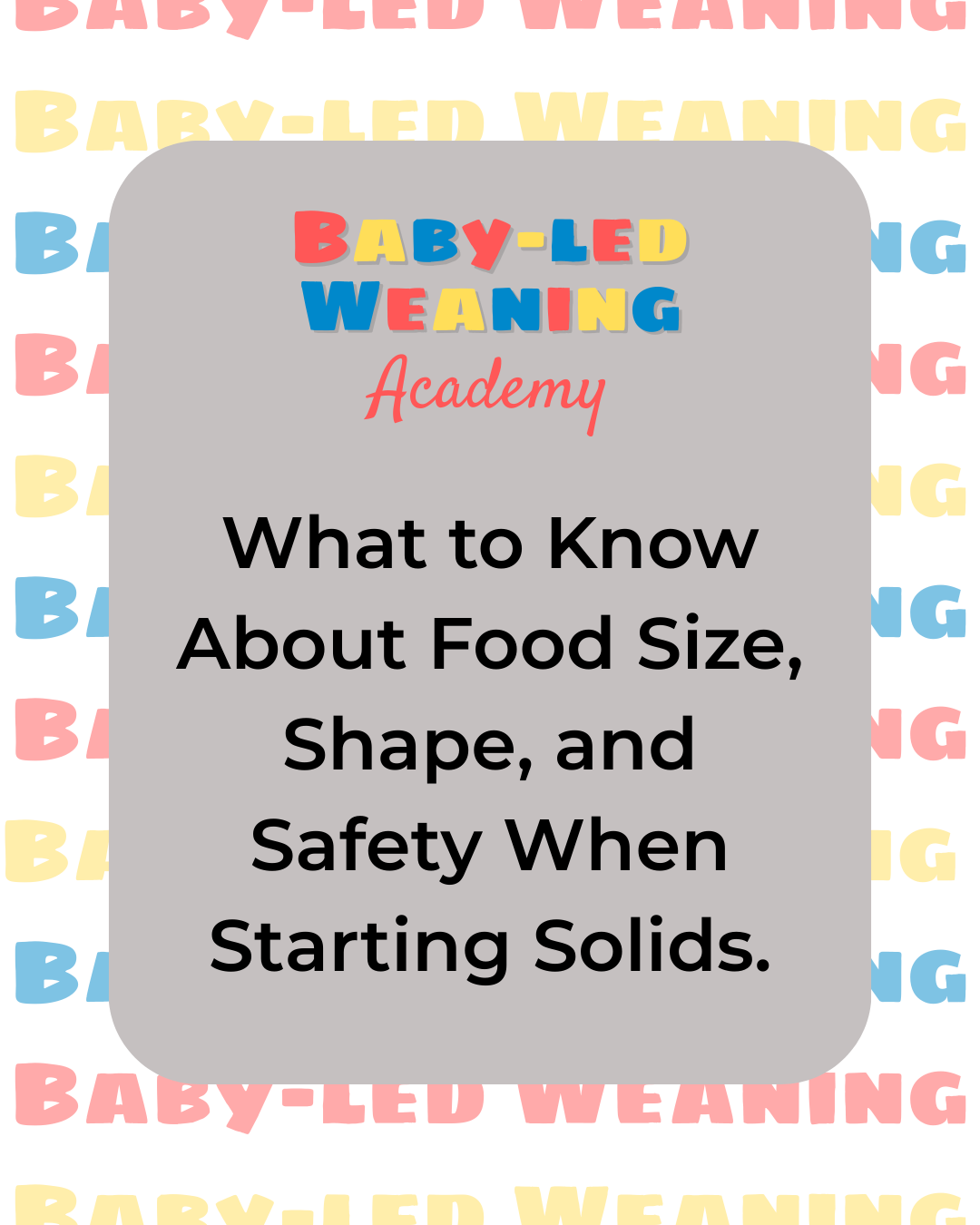What to Know About Food Size, Shape, and Safety When Starting Solids
A No-Stress Guide to BLW Food Prep That Actually Makes Sense
Tiny pieces aren’t safer — they’re just harder to hold.
Prefer to listen?
If you’ve been hovering over your baby’s plate, wondering if you cut everything “right,”
Or if you’ve been slicing food into tiny pieces out of fear (or habit)...
This is your permission slip to stop.
When it comes to baby-led weaning, bigger is actually better.
This post covers:
Why finger-sized food is safer than it seems
What shapes support your baby’s development
What to avoid when prepping solids
And how to set up a safe mealtime from start to finish
Let’s simplify the whole “how do I cut it?” question — once and for all.
Bigger Is Safer (Yes, Really)
Why tiny pieces aren’t the goal when starting solids
If you’ve ever been told to cut food into small bites for safety — you’re not alone.
But here’s the real talk:
🔸 Brand new eaters don’t have a pincer grasp yet
That skill (thumb + finger) usually shows up around 9 months. Until then, they’re using their whole palm.
🔸 Tiny food is harder to pick up
Think diced carrots, peas, chopped chicken. It just falls apart — or becomes a choking hazard if they get too much in their mouth at once.
🔸 Finger-length strips give them control
This shape lets babies grab, gnaw, gum, and learn how to take bites.
💡 Use the Finger Rule
Cut food into strips about the size and width of 1–2 adult fingers.
Example: roasted sweet potato, soft toast strips, ripe avocado wedges.
The Goal Isn’t Tiny Bites — It’s Confident Gripping
Baby-led weaning supports motor skills, not micromanaging
When you stop thinking about “bite-sized” and start thinking about “grabbable,” everything changes.
✔️ Focus on shapes that match your baby’s abilities
✔️ Serve soft textures that mash easily between fingers
✔️ Offer pieces big enough to hold, not swallow whole
Grip = control = safer feeding
Are they going to drop it? Yep.
Smear it? Definitely.
Put it in their ear? Probably.
But that’s the curriculum. Mess = learning.
BLW Food Safety Basics
A few things to avoid — and why they matter
🚫 No round or hard foods
Whole grapes
Raw carrots
Cherry tomatoes
Melon balls
Baby carrots (they’re not made for babies!)
Always cut these down into finger-length strips or flatten and quarter them.
🚫 No sticky clumps
Globs of nut butter
Marshmallows
Chewy snacks that stick in the mouth
Texture and shape matter more than size alone.
A soft finger-length strip is safer than a tiny hard cube.
Safe Setup = Safe Mealtime
Food prep is just one piece of the puzzle
Safety isn’t only about how you cut the food.
It’s also about how your baby is positioned and how you show up during the meal.
Your baby needs:
✅ A high chair with foot support
✅ 90° angles at hips, knees, and ankles
✅ A calm, upright body and alert state
✅ You, seated with them and staying present
The safest thing you can do?
Be near. Be calm. Be encouraging.
Not hovering. Not panicking.
Just… present.
The 3-Question Prep Test
Before you serve something, ask:
Can I squish it between my fingers?
Is it about the length/width of a finger or two?
Is it too round, hard, or sticky to manage safely?
If you can answer yes, yes, and no — you’re good to go.
TL;DR: How to Prep Food for Baby-Led Weaning
🔹 Use finger-length strips for early grasping
🔹 Choose soft textures that baby gums can mash
🔹 Avoid choking hazards like round, sticky, or hard foods
🔹 Support your baby’s posture with good seating
🔹 Stay present and calm at mealtimes — your energy matters
Want Visuals, Videos, and More Support?
This free class walks you through:
Readiness signs
Safe food prep
Gear that helps (and what to skip)
And how to feel confident — not stressed
It’s the perfect starting place if you’re feeling unsure.
Next Up: All About Allergens
In the next episode, we’re tackling one of the biggest fears: introducing allergens.
I’ll walk you through how to do it calmly, safely, and with a whole lot more confidence.
You’ve got this — and I’ve got you.

